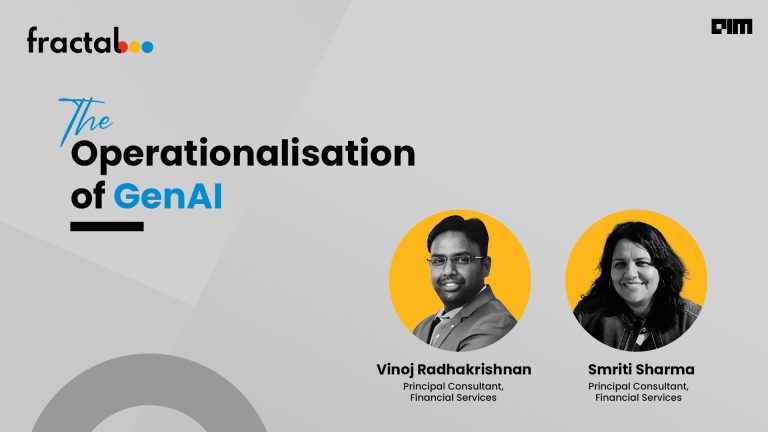Many believe that the rush to adopt generative AI may soon lead to a bubble burst. OpenAI, creator of ChatGPT, faces high operating costs and insufficient revenue, potentially leading to losses of up to $5 billion in 2024 and risking bankruptcy within a year.
OpenAI is expected to spend nearly $4 billion this year on Microsoft’s servers and almost $3 billion on training its models. With its workforce of around 1,500 employees, expenses could reach up to $1.5 billion. In total, operational costs may hit $8.5 billion, while revenue stands at only $3.4 billion.
However, some believe otherwise. “As long as Sam Altman is CEO of OpenAI, OpenAI will never go bankrupt. He will continue to drop mind-blowing demos and feature previews, and raise billions. I am not being sarcastic, it’s the truth,” posted AI influencer Ashutosh Shrivastava on X.
He added that with products like Sora, the Voice Engine, GPT-4’s voice feature, and now SearchGPT, anyone who thinks OpenAI will go bankrupt is simply underestimating Altman.
As OpenAI prepares to seek more funding in the future, it’s essential for Altman to create more bubbles of hype. Without this, the industry risks underestimating the full impact of generative AI.
Chinese investor and serial entrepreneur Kai-Fu Lee is bullish about OpenAI becoming a trillion-dollar company in the next two to three years. “OpenAI will likely be a trillion-dollar company in the not-too-distant future,” said Lee recently.
On the contrary, analysts and investors from major financial institutions like Goldman Sachs, Sequoia Capita, Moody’s, and Barclays have released reports expressing concerns about the profitability of the substantial investments in generative AI.
Sequoia Capital partner David Cahn’s recent blog, “600 Billion Question,” points out the gap between AI infrastructure spending and revenue. He suggests the industry needs to generate around $600 billion annually to cover investment costs and achieve profitability.
Early Signs of an AI Bubble?
Microsoft shares fell 7% on Tuesday as the tech giant reported lower-than-expected revenue. Revenue from its Intelligent Cloud unit, which includes the Azure cloud-computing platform, rose 19% to $28.5 billion in the fourth quarter, missing analysts’ estimates of $28.68 billion.
Despite that, the company announced plans to spend more money this fiscal year to enhance its AI infrastructure, even as growth in its cloud business has slowed, suggesting that the AI payoff will take longer than expected.
Microsoft CFO Amy Hood explained that the spending is essential to meet the demand for AI services, adding that the company is investing in assets that “will be monetised over 15 years and beyond.” CEO Satya Nadella also said that Azure AI now boasts over 60,000 customers, marking a nearly 60% increase year-on-year, with the average spending per customer also on the rise.
Last week, Google’s cloud revenue exceeded $10 billion, surpassing estimates for Q2 2024. The company is, however, facing increasing AI infrastructure costs. Google CEO Sundar Pichai insists, “The risk of under-investing far outweighs the risk of over-investing for us.” He warned, “Not investing to stay ahead in AI carries much more significant risks.”
“If you take a look at our AI infrastructure and generative AI solutions for cloud across everything we do, be it compute on the AI side, the products we have through Vertex AI, Gemini for Workspace and Gemini for Google Cloud, etc, we definitely are seeing traction,” Pichai said, elaborating that the company now boasts over two million developers playing around with Gemini on Vertex and AI Studio.
“AI is exceptionally expensive, and to justify those costs, the technology must be able to solve complex problems, which it isn’t designed to do,” said Jim Covello, Goldman Sachs’ head of global equity research.
Really?
Recently, Google DeepMind’s AlphaProof and AlphaGeometry 2 AI models worked together to tackle questions from the International Math Olympiad (IMO). The DeepMind team scored 28 out of 42 – enough for a silver medal but one point short of gold.
Meanwhile, the word on the street is that OpenAI is planning to start a healthcare division focused on developing new drugs using generative AI. Recently, the startup partnered with Moderna to develop mRNA medicines. The company is already working with Whoop, Healthify, and 10BedICU in healthcare.
JPMorgan recently launched its own AI chatbot, LLM Suite, providing 50,000 employees (about 15% of its workforce) in its asset and wealth management division with a platform for writing, idea generation, and document summarisation. This rollout marks one of Wall Street’s largest LLM deployments.
“AI is real. We already have thousands of people working on it, including top scientists around the world like Manuela Veloso from Carnegie Mellon Machine Learning,” said JP Morgan chief Jamie Dimon, adding that AI is already a living, breathing entity.
“It’s going to change, there will be all types of different models, tools, and technologies. But for us, the way to think about it is in every single process—errors, trading, hedging, research, every app, every database—you’re going to be applying AI,” he predicted. “It might be as a copilot, or it might be to replace humans.”
Investor and Sun Microsystems founder Vinod Khosla is betting on generative AI and remains unfazed by the surrounding noise. “These are all fundamentally new platforms. In each of these, every new platform causes a massive explosion in applications,” Khosla said.
Further, he acknowledged that the rush into AI might lead to a financial bubble where investors could lose money, but emphasised that this doesn’t mean the underlying technology won’t continue to grow and become more important.
Declining Costs
Dario Amodei, CEO of Anthropic, has predicted that training a single AI model, such as GPT-6, could cost $100 billion by 2027. In contrast, a trend is emerging towards developing small language models, more cost-efficient language models that are easier to run without requiring extensive infrastructure.
OpenAI co-founder Andrej Karpathy recently said that the cost of building an LLM has come down drastically over the past five years due to improvements in compute hardware (H100 GPUs), software (CUDA, cuBLAS, cuDNN, FlashAttention) and data quality (e.g., the FineWeb-Edu dataset).
Abacus.AI chief Bindu Reddy predicted that in the next five years, smaller models will become more efficient, LLMs will continue to become cheaper to train, and LLM inference will become widespread. “We should expect to see several Sonnet 3.5 class models that are 100x smaller and cheaper in the next one to two years.”
The Bigger Picture
Generative AI isn’t represented by a single bubble like the dot-com era but is manifested in multiple, industry-specific bubbles. For example, generative AI tools for video creation, such as SORA and Runway, demand much more computational power compared to customer care chatbots. Despite these variations, generative AI is undeniably a technology with lasting impact and is here to stay.
“I think people are using ‘bubble’ too lightly and without much thought, as they have become accustomed to how impressive ChatGPT or similar tools are and are no longer impressed. They are totally ignoring trillion-dollar companies emerging with countless new opportunities. Not everything that grows is a bubble, and we should stop calling AI a bubble or a trend. It is a new way of doing things, like the internet or smartphones,” posted a user on Reddit.
“AI is more like…a tree. It took a long time to germinate, sprouted in 2016, became something worth planting in 2022, and is now digging its roots firmly in. Is the tree bubble over now? Heh. Just like a tree, AI’s impact and value will keep growing and evolving. It’s not a bubble; it’s more like an ecosystem,” said another user on Reddit.
The Bubblegum effect: The issue today is that investors are using OpenAI and NVIDIA as benchmarks for the AI industry, which may not be sustainable in the long term. While NVIDIA has had significant success with its H100s and B200s, it cannot afford to become complacent.
The company must continually innovate to reduce training costs and maintain its edge. This concern is evident in NVIDIA chief Jensen Huang’s anxiety about the company’s future.
“I am paranoid about going out of business. Every day I wake up in a sweat, thinking about how things could go wrong,” said Huang.
He further explained that in the hardware industry, planning two years in advance is essential due to the time required for chip fabrication. “You need to have the architecture ready. A mistake in one generation of architecture could set you back by two years compared to your competitor,” he said.
NVIDIA’s success should not be taken for granted, even with the upcoming release of its latest GPU, Blackwell. Alternatives to NVIDIA are increasingly available, particularly for inference tasks, including Google TPUs and Groq. Recently, Groq demonstrated impressive inference speed with Llama 3.1, and Apple selected Google TPUs over NVIDIA GPUs for its model training needs.
Most recently, AI hardware company Etched.ai, unveiled its chip purpose-built just to run transformer models. Etched claims that Sohu can process over 500,000 tokens per second with Llama 70B. One 8xSohu server replaces 160 H100s. According to the company, “Sohu is more than ten times faster and cheaper than even NVIDIA’s next-generation Blackwell (B200) GPUs.”
Meta recently released Llama 3.1, which is currently competing with GPT-40. Meta chief Mark Zuckerberg is confident that Llama 3.1 will have a similar impact on the AI ecosystem as Linux had on the operating system world. Moreover, Meta also recently launched AI Studio, which allows creators to build and share customisable AI agents.
In contrast, “I hate the AI hype and, at the same time, I think AI is very interesting,” said Linus Torvalds, the creator of the Linux kernel, in a recent conversation with Verizon’s Dirk Hohndel. When asked if AI is going to replace programmers and creators, Torvalds asserted that he doesn’t want to be a part of the AI hype.
He suggested that we should wait ten years before making broad announcements, such as claiming that jobs will be lost in the next five years.
Bursting the Bubble
With AI representing more than just a single bubble, some of these bubbles may burst. Gartner predicts that by the end of 2025, at least 30% of generative AI projects will be abandoned after the proof-of-concept stage due to factors such as poor data quality, inadequate risk control, escalating costs, and unclear business value.
Some start-ups that thrived during the initial AI boom are now encountering difficulties. Inflection AI, founded by ex-Google DeepMind veterans, secured $1.3 billion last year to expand their chatbot business. However, in March, the founders and some key employees moved to Microsoft. Other AI firms, like Stability AI, which developed a popular AI image generator, have faced layoffs. The industry also contends with lawsuits and regulatory challenges.
Meanwhile, Karpathy is confused as to why state of the art LLMs can both perform extremely impressive tasks (e.g. solve complex math problems) while simultaneously struggling with some very dumb problems such as incorrectly determining that 9.11 is larger than 9.9. He calls this “Jagged Intelligence.”
































